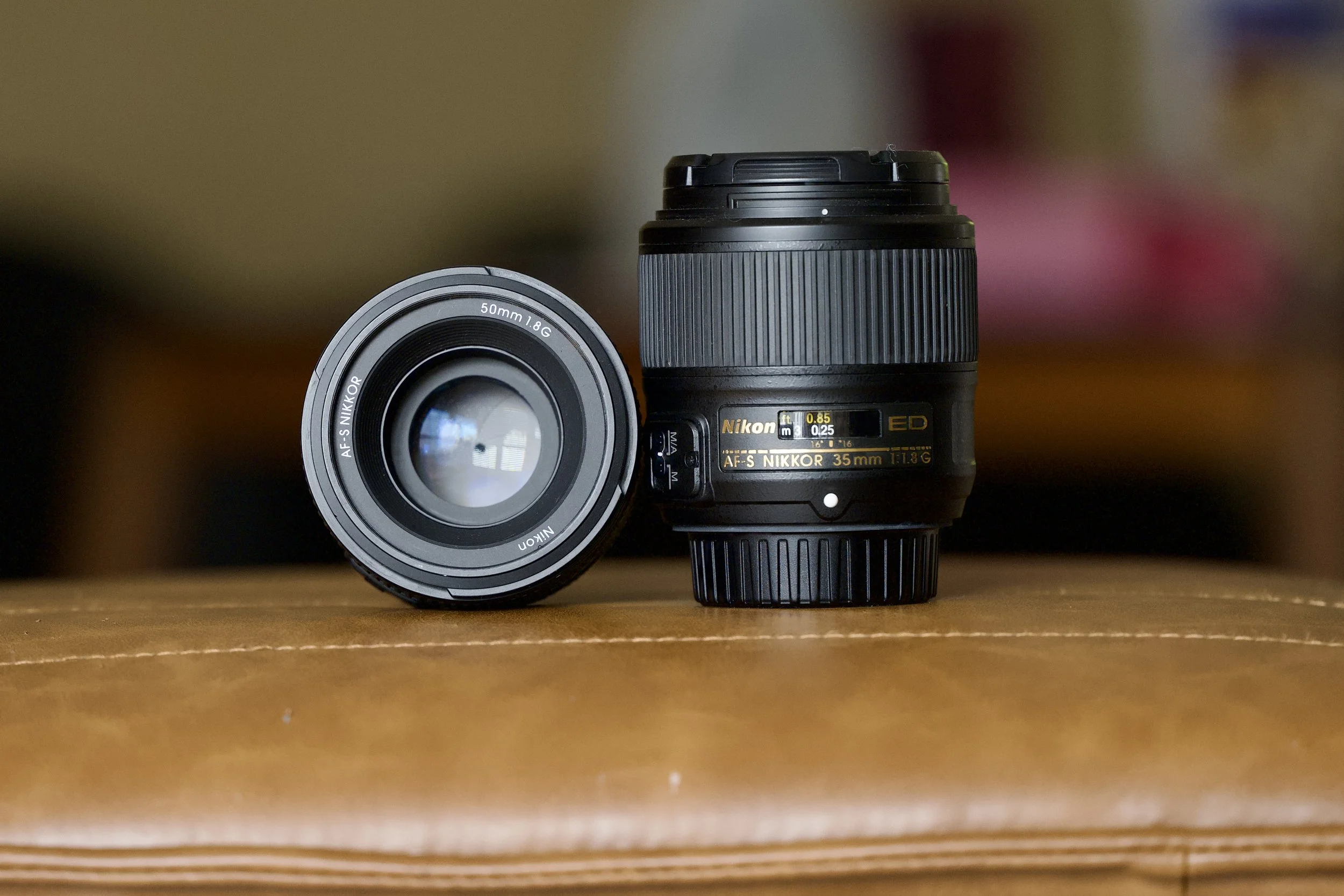35mm vs 50mm Lens – Choosing Your Perfect Prime
Hey there, my photographer friend!
If you’re looking to invest in your first prime lens, you’ve likely found yourself stuck between two legends: the 35mm and the 50mm. These two lenses are staples in nearly every professional’s bag, yet they offer fundamentally different ways of seeing the world.
This friendly, informative guide is designed to cut through the noise and help you select the lens that perfectly matches your shooting style.
Understanding the Basics: Focal Length and Prime Power
The numbers 35mm and 50mm refer to the lens's focal length, which dictates how much of the scene you can fit into your frame. A shorter focal length (35mm) appears "zoomed out" and captures a wider view, while a longer focal length (50mm) appears more "zoomed in" and narrows your field of view.
Crucially, both of these are typically prime lenses (fixed focal length), which is why photographers love them:
Fast Apertures (f/1.8, f/1.4): Primes have wider maximum apertures than most zoom lenses. This means incredible performance in low-light conditions (no flash needed!) and the ability to create beautiful, shallow depth of field—that coveted, creamy background blur known as bokeh that makes your subject pop.
The Crop Factor Caveat (Don’t Skip This!)
Before you choose, you must account for your camera's sensor size:
Full-Frame (FF): The focal lengths behave as labeled.
Crop-Sensor (APS-C or Micro Four Thirds): Your sensor is smaller, effectively "zooming in" the lens. You need to multiply the focal length by your camera's crop factor (usually 1.5x or 1.6x for Canon/Nikon/Sony APS-C).
35mm on a crop frame will “look” like 50mm.
50mm on a crop frame will “look” like 75-80mm.
The 35mm: The Environmental Storyteller
The 35mm is a wide-angle lens, but it hits the "sweet spot" of being wide enough to capture a scene without the extreme, unflattering distortion you see in lenses like a 16mm or 24mm.
Why Photographers Love the 35mm Lens
Wider Field of View: Captures more of the scene, making it perfect for environmental portraits where you want to show the subject and their surroundings (the story).
Indoor King: Ideal for shooting in tight spaces like small apartments, coffee shops, or for documentary/lifestyle photography, where you can't step back far.
Low Distortion: Great for group shots and street photography without the extreme, unflattering warping seen in ultra-wide lenses.
Gets Close: Typically has a slightly shorter minimum focus distance (MFD) than the 50mm, letting you get closer to small details.
Best for Crop-Sensor Cameras: On an APS-C camera, the 35mm acts like a versatile 50mm, offering a natural field of view.
When NOT to Use It: For close-up, individual headshots on a full-frame camera. If you get too close, the wide-angle perspective can slightly distort facial features.
The 50mm: The Natural Perspective
Often called the "Nifty Fifty" (especially the budget-friendly f/1.8 version), the 50mm is famous because, on a full-frame camera, its field of view is the closest match to the human eye. What you see is essentially what you get.
Why Photographers Love the 50mm Lens
"Natural" View: On a full-frame camera, its perspective closely matches the human eye, creating images that feel familiar and comfortable to the viewer.
No Distortion: Since it's not a wide-angle lens, it’s highly flattering for single portraits and detailed close-ups.
Versatile Workhorse: Works beautifully for everything from portraits to street photography to product shots—a true general-purpose lens for full-frame cameras.
Superior Bokeh: The slightly longer focal length provides better lens compression than the 35mm, resulting in greater background separation and blur (bokeh) at the same aperture.
Ideal for Full-Frame Portraits: It's the go-to prime for single portraits when you want flattering results without the cost of an 85mm.
When NOT to Use It: In very small indoor spaces (bedrooms, tiny bathrooms, small churches). You’ll quickly find yourself hitting the back wall because you don't have enough room to step back and fit the scene into your frame.
The Verdict: Which Lens Is Your Match?
There is no "better" lens, only the lens that is better for you.
Choose the 35mm If...
You shoot on a crop-sensor camera (it acts like a 50mm).
You shoot in small indoor spaces frequently and need to fit more into the frame.
You want to capture the environment and the story surrounding your subject.
You need a great walk-around lens for travel and street photography that captures a wide scene.
Choose the 50mm If...
You prioritize flattering single portraits on a full-frame camera.
You want the most natural and realistic perspective (on a full-frame camera).
You want the maximum bokeh (background blur) for your budget.
You can only buy one prime lens for your full-frame camera and need an excellent, distortion-free general-purpose lens.
Final Pro Tip!!
If you have a zoom or kit lens, try this simple test:
Set your zoom to 35mm. Leave it there for a week. See how you compose your shots.
Set your zoom to 50mm. Leave it there for a week. Note how often you wish you could step back (or step closer). This experiment will give you an intuitive feel for which focal length best suits your natural shooting style before you make the investment.
Needing to dive deeper? Check out…
Lightroom Unlocked for editing.
The Ultimate Preset Toolkit for lightning fast, unmatched editing tools.
Mastering Manual Mode for a comprehensive course suitable for beginner or intermediate photographers.
Digital Declutter in Lightroom Classic for photo management and organization.
The Photography Fast Track for a 5 day workshop to get off of AUTO mode.
Nancy’s Recommended Gear and where she buys it used (reputable with warranties!)










